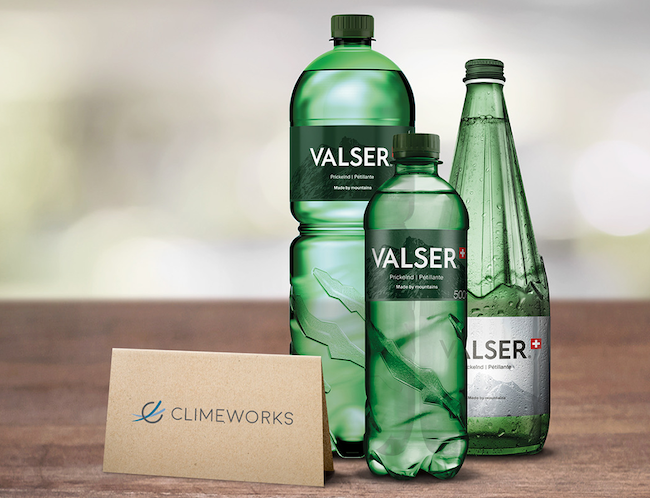
Judging from the latest news humming around the Intertubes, the Coca-Cola Company seems to have gazed into a crystal ball and discerned an interesting supply chain problem looming in the low carbon economy of the future. Let's call it the carbon dioxide dilemma. Carbon dioxide is a greenhouse gas responsible for global warming, but for Coca-Cola and other soft drink makers, the problem could be not enough of it, rather than too much.
Or not, as the case may be. Coca-Cola has hit upon a high tech solution that could prove, once again, that the low carbon economy of the future is one in which bottom line and sustainability goals intertwine.
What puts the pop in soda pop?
Carbon dioxide has a wide number of commercial uses as a liquid, solid, and gas. As a gas it is common in food processing, especially in the preservation of fresh meats and salads, in making packaged foods and of course, in the beverage sector. Carbon dioxide gas has unique properties and an acidic taste, which adds flavor and interest to drinks that would otherwise be flat and bland-tasting.
It's no accident that carbonated drinks became popular on the heels of the industrial revolution. Almost all commercially available CO2 is captured from large scale breweries and biogas operations, or from industrial processes with a high carbon content, such as lime (used in cement) or ammonia manufacturing.
The future of the carbon dioxide supply chain
The supply chain pressure is already closing in on Coca-Cola and other beverage companies as the overall global demand for soft drinks and processed foods rises. Beverage manufacturers are also facing supply chain competition from sales of bottled CO2 for home use. New systems for creating chemicals, fuel and plastic products from industrial waste gas are contributing to the squeeze, too.
Supply chain cracks are already beginning to show. Just last summer, for example, The Grocer attributed a "CO2 crisis" in the United Kingdom and Europe to a seasonal problem. Summer is the season when ammonia and bio-ethanol plants often shut down for maintenance, and across Europe more plants than usual went offline.
The U.K. was especially hard hit. It also experienced a shortfall in CO2 purifying capacity last summer, which exacerbated the problem. Several purifying plants shut down for routine maintenance while others experienced technical difficulties, leaving just one plant in operation for a time.
A transportation bottleneck also came into play. There was a shortfall in specialized delivery trucks, which The Grocer attributed to the gas industry's failure to plan ahead "develop the logistical capacity needed to keep pace with growing demand," partly due to skyrocketing growth in the brewery sector.
Coca-Cola and the low carbon economy of the future
This is where the Coca-Cola solution comes in. Carbon dioxide is, of course, ubiquitous in the atmosphere. So, the potential is there for bottling plants and other facilities to simply acquire their own supply from the ambient air, using equipment located in or near the facility.
As a corporate social responsibility bonus, an ambient air carbon capture system would also help companies like Coca-Cola offset their carbon footprint in a very simple and direct way.
The main stumbling block to ambient air capture has been cost, but global warming has provided the financial motivation for startups to tinker around with the technology and come up with commercially viable systems.
The latest news from Coca-Cola could have broad implications for the decarbonization. As reported by Gasworld earlier this week, Coca-Cola has partnered with the startup carbon capture company Climeworks to draw CO2 from ambient air, and use it in a bottling plant.
Climeworks has developed a modular, automated system it calls Direct Air Capture, in collaboration with the leading CO2 supplier Pentair Union Engineering (Denmark-based Union Engineering was acquired by the global water solutions company Pentair last year).
The company is a spinoff based on research from the renewable energy program at Switzerland's ETH Zurich. The basic steps of its carbon capture process are relatively straightforward.
Air is drawn into the system where it encounters a filter. Once the filter is saturated with CO2 it is exposed to heat, at a temperature equal to the boiling point of water or 212 °F. This relatively low level of heat enables the system to operate on a diverse energy platform, including geothermal as well as other renewables.
Once heated, the filter releases the CO2 and it is collected as a concentrated gas. According to the company, the filter can be used for several thousand cycles.
The first to try the new technology will be Coca-Cola HBC Switzerland's sparkling water brand Valsa. Though it's a pilot project aimed at helping Climeworks scale up the technology, Coca-Cola is already thinking big: the Swiss subsidiary is its second-largest anchor bottler.
Beyond beverages
Like Coca-Cola, Climeworks is also thinking ahead. Greenhouses are another source of demand for commercial carbon dioxide, which they use to create a rich environment for growing plants. Climeworks is looking into that sector for additional business.
Other areas of interest include fresh meat and vegetable packing, dry ice manufacturing, and the bulk gas used for carbonation by bars and restaurants as well as synthesizing fuels, plastics and other materials.
Photo: via Coca-Cola.

Tina writes frequently for TriplePundit and other websites, with a focus on military, government and corporate sustainability, clean tech research and emerging energy technologies. She is a former Deputy Director of Public Affairs of the New York City Department of Environmental Protection, and author of books and articles on recycling and other conservation themes.














